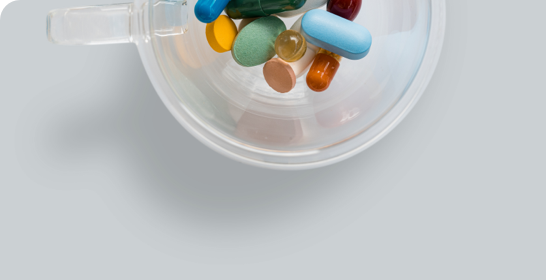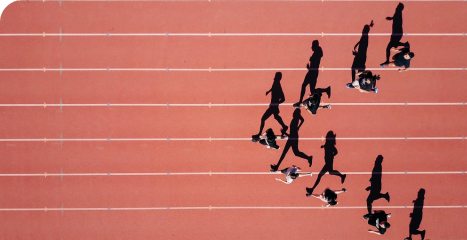We use cookies to make your experience better. To comply with the new e-Privacy directive, we need to ask for your consent to set the cookies. Learn more.
BCM-95 - Curcugreen - Turmeric [Curcuma longa] rhizome 95% Curcuminoids complex granular PE
Synonym(s):
- Curcumin extract; Curcuma Longa extract; Curcumin curcuminoids
- CAS Number: 84775-52-0
- EC Number: 283-882-1
BCM-95 - Curcugreen - Turmeric [Curcuma longa] rhizome 95% Curcuminoids complex granular PE
Key Facts
Various forms of BCM-95
Powder grade (mainly used in capsule Industry)- BCM-95 - Curcugreen - Turmeric [Curcuma longa] rhizome 95% Curcuminoids complex powder extractGranular grade (used in tabletting but also in capsule) - BCM-95 - Curcugreen - Turmeric [Curcuma longa] rhizome 95% Curcuminoids complex granular powder extract
Dispersible grade (mainly used in beverages)
Background
Turmeric (Curcuma longa), primarily used as a culinary spice, has also been used historically as a natural colouring agent (food, cosmetics, and textiles) and for various medical purposes. Turmeric gets its distinctive yellow colour from bioactive curcuminoids found in the plant's rhizome and it is the major bioactive curcuminoid which was first isolated from turmeric rhizomes in 1815 by German scientists Vogel and Pelletier. Since then, it has piqued the interest from both the medical and scientific world (Aggarwal et al., 2006).Safety and Purity
Curcumin is well-known for its vast medicinal therapeutic properties, which has resulted in a multitude of turmeric-based formulations in the global market, but BCM-95 (CURCUGREEN) is the premium quality, 100% turmeric, and most bioavailable product available, with a strong safety profile.BCM95 is GRAS affirmed,GMO free and GMP compliant with no harmful solvents or toxic additivesChemistry
Curcumin (1,7-bis-(4-hydroxy-3-methoxyphenyl-1,6-heptadiene-3,5-dione)
CAS – 458-37-7Molecular Formula – C21H20O6
Molecular Weight – 368.4 g/mol
IUPAC - (1E,6E)-1,7-bis(4-hydroxy-3-methoxyphenyl)hepta-1,6-diene-3,5-dione
Demethoxycurcumin (DMC)
CAS – 22608-11-3Molecular Formula – C20H18O5
Molecular Weight – 338.4 g/mol
IUPAC(1E,6E)-1-(4-hydroxy-3-methoxyphenyl)-7-(4-hydroxyphenyl)hepta-1,6-diene-3,5-dione
Bisdemethoxycurcumin (BDMC)
CAS – 33171-05-0Molecular Formula – C19H16O4
Molecular Weight – 308.3 g/mol
IUPAC - (1E,6E)-1,7-bis(4-hydroxyphenyl)hepta-1,6-diene-3,5-dione
Bioavailability
Curcumin is a promising therapeutic agent, but its low bioavailability limits its clinical efficacy. Poor absorption, rapid metabolism, chemical instability, and rapid systemic elimination all contribute to lower bioavailability (Anand et al., 2007). However, this problem can be solved with the introduction of BCM-95, which is formulated by blending standardized curcuminoids with turmeric essential oil, resulting in a completely pure and bioavailable extract. Curcumin from the BCM-95 composition is absorbed early and retained longer than normal curcumin. BCM-95 has a 6.93-fold higher relative bioavailability than curcumin alone (Aggarwal et al., 2016), and free curcumin has been proven to be retained in the bloodstream for up to 8 hoursHealth Benefits
Curcumin is used worldwide in different forms for anti-inflammatory, anticancer, antiviral, antioxidant properties among many other health benefits, scientifically proven in clinical research:Anti-inflammatory
Curcumin is a natural anti-inflammatory agent that can interact with a wide range of molecular targets involved in inflammation. Research shows that Curcumin is a highly pleiotropic molecule that decreases inflammation by interacting with a variety of inflammatory processes. It has shown to not only regulate the expression of inflammatory cytokines such as TNF-, IKK kinase, IL-6, and IL-8 (Kim et al., 2011), but it also increases the activity of numerous antioxidant enzymes such as catalase, superoxide dismutase, and glutathione peroxide (Henrotin et al., 2010). It has been shown to possess excellent free radical scavenging properties (Sreejayan & Rao, 1997; Ak & Gülçin, 2008.Anticancer
Curcumin's chemotherapeutic potential has been extensively studied, and it has demonstrated significant anticancer effects against a variety of cancers, including prostate cancer, breast cancer, colorectal cancer, pancreatic cancer, and head and neck cancer. The tumorigenesis of the skin, oral cavity, mammary gland, oesophagus, stomach, intestine, colon, lung, and liver have been shown to be suppressed by curcumin (Huang et al., 1988; Kuttan et al., 1985, 1987; Ushida et al., 2000). Curcumin has also been shown in in-vitro and in-vivo studies to prevent carcinogenesis by influencing two primary processes: angiogenesis and tumour growth (Lutgendorf et al., 2007) .Anti-viral activity
Curcumin as a plant derivative that has been shown to have antiviral activity against a variety of viruses, including papillomavirus, influenza virus, Hepatitis B virus, Hepatitis C virus, adenovirus, coxsackie virus, Human norovirus, Respiratory syncytial virus, and Herpes simplex 1. (Rathore et al., 2022). The most recent study is on the therapeutic potential of curcumin against COVID-19 (Zapanta et al., 2022).Anti-oxidant
Curcumin has been shown to improve systemic markers of oxidative stress. It can modulate the activity of GSH, catalase, and SOD enzymes active in the neutralization of free radicals (Sahebkar et al., 2015). It can scavenge different forms of free radicals, such as reactive oxygen and nitrogen species (ROS and RNS, respectively) also, it can inhibit ROS-generating enzymes such as lipoxygenase/cyclooxygenase and xanthine hydrogenase/oxidase (Menon & Sudheer, 2007). In addition, curcumin is a lipophilic compound, which makes it an efficient scavenger of peroxyl radicals (Priyadarsini et al., 2003).References
- Aggarwal, B. B., Bhatt, I. D., Ichikawa, H., Ahn, K. S., Sethi, G., Sandur, S. K., ... & Shishodia, S. (2006). 10 Curcumin—biological and medicinal properties
- Aggarwal, M. L., Chacko, K. M., & Kuruvilla, B. T. (2016). Systematic and comprehensive investigation of the toxicity of curcuminoid essential oil complex: A bioavailable turmeric formulation. Molecular Medicine Reports, 13(1), 592-604
- Ak, T., & Gülçin, İ. (2008). Antioxidant and radical scavenging properties of curcumin. Chemico-biological interactions, 174(1), 27-
- Anand, P., Kunnumakkara, A. B., Newman, R. A., & Aggarwal, B. B. (2007). Bioavailability of curcumin: problems and promises. Molecular pharmaceutics, 4(6), 807-818.
- Henrotin, Y., Clutterbuck, A. L., Allaway, D., Lodwig, E. M., Harris, P., Mathy-Hartert, M., ... & Mobasheri, A. (2010). Biological actions of curcumin on articular chondrocytes. Osteoarthritis and cartilage, 18(2), 141-149.
- Huang, M. T., Lou, Y. R., Xie, J. G., Ma, W., Lu, Y. P., Yen, P., ... & Ho, C. T. (1998). Effect of dietary curcumin and dibenzoylmethane on formation of 7, 12-dimethylbenz [a] anthracene-induced mammary tumors and lymphomas/leukemias in Sencar mice. Carcinogenesis, 19(9), 1697-1700.
- Kim, K. H., Lee, E. N., Park, J. K., Lee, J. R., Kim, J. H., Choi, H. J., ... & Yoon, S. (2012). Curcumin attenuates TNF‐α‐induced expression of intercellular adhesion molecule‐1, vascular cell adhesion molecule‐1 and proinflammatory cytokines in human endometriotic stromal cells. Phytotherapy Research, 26(7), 1037-1047.
- Kuttan, R., Bhanumathy, P., Nirmala, K., & George, M. C. (1985). Potential anticancer activity of turmeric (Curcuma longa). Cancer letters, 29(2), 197-202
- Kuttan, R., Sudheeran, P. C., & Josph, C. D. (1987). Turmeric and curcumin as topical agents in cancer therapy. Tumori Journal, 73(1), 29-31.
- Lutgendorf, S. K., Aggarwal, B. B., & Sood, A. K. Curcumin InhibitsTumor Growth and Angiogenesis in Ovarian Carcinoma byTargeting the Nuclear Factor-KB Pathway
- Menon, V. P., & Sudheer, A. R. (2007). Antioxidant and anti-inflammatory properties of curcumin. The molecular targets and therapeutic uses of curcumin in health and disease, 105-125.
- Priyadarsini, K. I., Maity, D. K., Naik, G. H., Kumar, M. S., Unnikrishnan, M. K., Satav, J. G., & Mohan, H. (2003). Role of phenolic OH and methylene hydrogen on the free radical reactions and antioxidant activity of curcumin. Free Radical Biology and Medicine, 35(5), 475-484.
- Rao, M. N. A. (1997). Nitric oxide scavenging by curcuminoids. Journal of pharmacy and Pharmacology, 49(1), 105-107
- Rathore, S., Mukim, M., Sharma, P., Devi, S., Nagar, J. C., & Khalid, M. (2020). Curcumin: A review for health benefits. Int. J. Res. Rev, 7(1), 273-290
- Sahebkar, A., Serban, M. C., Ursoniu, S., & Banach, M. (2015). Effect of curcuminoids on oxidative stress: A systematic review and meta-analysis of randomized controlled trials. Journal of functional foods, 18, 898-909.
- Sreejayan and Rao. (1997). Nitric oxide scavenging by curcuminoids. Journal of pharmacy and Pharmacology, 49(1), 105-107.
- Ushida, J., Sugie, S., Kawabata, K., Pham, Q. V., Tanaka, T., Fujii, K., ... & Mori, H. (2000). Chemopreventive effect of curcumin on N‐nitrosomethylbenzylamine‐induced esophageal carcinogenesis in rats. Japanese journal of cancer research, 91(9), 893-898
- Zapanta, S. A., Dematingcal, J. M. E., Mandin, R. M., & Rae, J. Curcumin: A Review on its Potential Benefits on COVID-19 Clinical Manifestations. Journal homepage: www. ijrpr. com ISSN, 2582, 7421, International Journal of Research Publication and Reviews, Vol 3, no 1, pp 286-295, January 2022
Write Your Own Review
Explore your sector
Vita Actives manufacture, source, stock and distribute the highest quality bulk ingredients for pharmaceutical, nutraceutical, cosmeceutical and veterinary finished product manufacturers. We also supply tailor-made raw materials and finished nutritional supplements.




